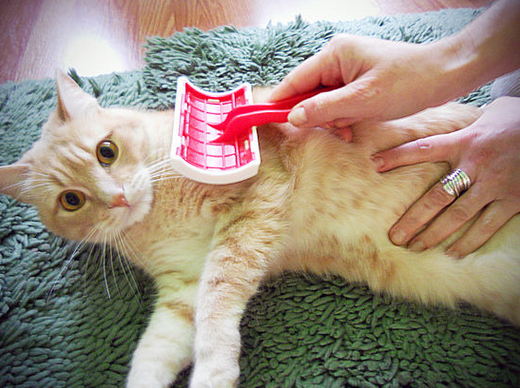Brushing Your Feline Friends

Brushing your cat is an essential part of grooming and a wonderful way to bond with your feline friends. Brushing not only helps keep your kitty clean, it also improves the condition of his or her skin which is vital to cat health.
How often should I brush my cat?
How often you should groom you kitty depends on the length and thickness of your cat’s coat and also varies seasonally. While all cats are unique, typically, a good rule of thumb is once a week for short-haired cats and every other day for long-haired cats. You may need to brush more often in warmer months when cats shed their thicker winter coats.
What type of brush should I use for my cat?
For short-haired cats, use a metal comb or a rubber brush. You may also use a metal comb for cats with longer hair along with a brush that has pin or wire bristles that are spaced farther apart to avoid knotting.



What is the best way to brush my cat?
Wait for a time when your cat is in a good mood and calm enough to sit long enough to be groomed. Find a spot where you and your cat may sit comfortably and begin by petting your cat so that he or she may settle down for the grooming session. Brush the entire body gently, one section at a time, making sure to move in the direction of the hair growth. Remove loose or dead hair as you go and gently untangle knots. For cats with long hair, use a mat-splitter to break up stubborn knots or carefully trim them with clippers or scissors. Be sure to pay attention to your cat’s body language to ensure that your cat is comfortable and stop brushing when your cat gives you signals that he or she has had enough for that session.
Don’t forget to do a body check!
Brushing sessions are an ideal time to do an overall body check on your furry friend to assess for any parasites, skin conditions, abnormal lumps, or tender spots. If you notice anything that is out of the ordinary or seems to be causing discomfort for your cat, seek professional assistance.
For more information on brushing and grooming practices, check out our link to the ASPCA’s article on Cat Brushing and Skin Care.
Happy grooming!


Have cat care or litter tips?
Please add them to the Cat Care or Litter Care sections in the Boxiecat Help Center!
Each week we pick an informative new tip or trick and thank the contributor with a free bag of Boxiecat!
- Tags: Cat Care

